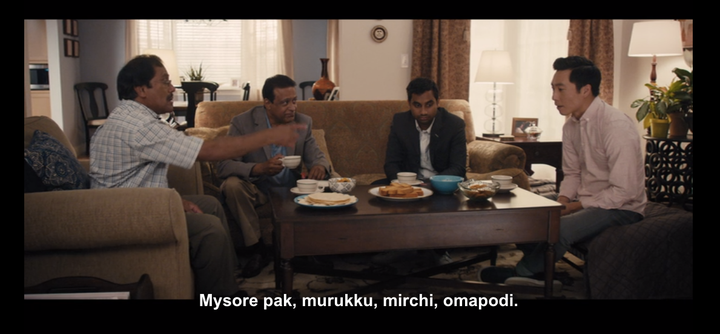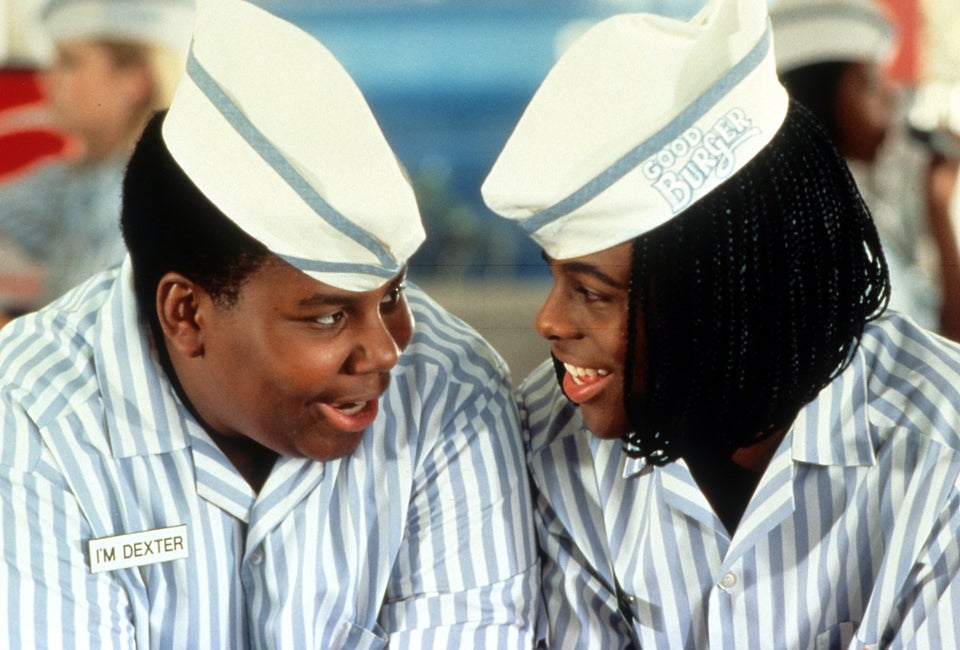Aziz Ansari's new show "Master of None" has been getting justifiable raves since its first season dropped on Netflix last week.
The show resonates with a generation that's grown to love feeling totally understood. The signature reaction that the Millennial Internet can provoke is, "Get out of my head!," like with spookily accurate Buzzfeed nostalgia, on-the-nose memes, niche subreddits, and the notion of #relatableaf. But as the consuming public becomes more diverse, it becomes harder, and more valuable, to produce that feeling. Particularly in television.
Because of their episodic format, TV shows often come off as unrealistic, since nothing in life wraps up in 26 minutes. So it's a feat that "Master of None," in one short season, renders so many modern experiences in a viscerally relatable way. It shows, or rather mirrors, things like getting lost in a Yelp k-hole to find tacos, that adult best friends don't actually hang out on a regular basis at the same places, and how walking home at night is routinely terrifying for women. When do you ever see such things on TV? Relatable af.
Here's something else that the show nails: the insides of immigrant homes. "Master of None" has the first mainstream depiction of the under-furnished, somewhat kitschy decor common to many Asian-American residences. In the poignant second episode, "Parents," which follows Ansari's Indian-American character Dev, his Taiwanese-American friend Brian, and their respective immigrant parents, we get a look inside two Asian-American homes.
The opening shots of Brian's dad's house feel like a mic drop.

Thin plywood kitchen cabinets, a Cantonese calendar, a bottle of chili paste on the fridge, the plastic-framed print on the wall, a couch that has seen better days, and most of all, unpainted walls. This is real. It looks exactly like the dozens of Asian-American homes, of friends, to which I was privy growing up in New Jersey.
Becoming a homeowner in America is such a wonderment that cohesively decorating said house strikes immigrant parents like gilding the lily. My parents were so happy to move from an apartment into a five-bedroom house, when I was seven, that they walked from room to empty room, marveling at their existence, for weeks before buying enough beds. In the show, we can compare Brian's barely decorated childhood home to the hut in Taiwan in which his father is shown to have grown up, which begets similar wonderment.
Compare the naturalism in "Master of None" to a network show's idea of an Asian-American home in "Fresh Off the Boat." Symmetrical lighting, tastefully painted walls, matching wallpaper, matching blond wood chairs: this is an American dream by way of Better Homes and Gardens.
Immigrants are usually too busy working to professionally decorate their homes. Our parents would sooner spend a windfall on technology or tangible goods than second-order luxury items like wall sconces. (The flashback scene with Dev's father's excitement at having brought home a computer gets this right.) So immigrant homes end up walking a fine line between sparseness and kitsch, which is beautifully rendered in "Master of None."
My parents' house in New Jersey still has fingerprints of kitsch despite my tireless decade-year long interior design crusade. Even when they actually commissioned a redecoration last year, old principles of entertaining trounced design concerns. Like a low, oversized coffee table amenable to an oversized spread of snacks. I suggested smaller ones that were shot down for their inability to facilitate this:

The lush cinematography of "Master of None" elevates these immigrant interiors and makes them as worthy of our gaze as the New York brownstones, trendy watering holes, and grand Nashville boulevards of the show's other scenes.
These homes, despite their brief screen time, are part of the show's subtle and realistic dramatization of Asian-American life, which is, by TV standards, often just not that showy. Dev's and Brian's parents immigrated very far, but as white-collar professionals, worked hard and propelled their children to bourgeois life. They owned stable and functional homes for their families that weren't ever cohesively beautified.
These characters unsettle stereotypes of what "ethnic homes" should look like -- either overly colorful and loud (a pitfall particularly of Indian culture packaged for TV, which Dev's parents' muted home subverts) or unrealistically whitewashed, like in "Fresh Off The Boat." The interiors, and characters, are compelling because they are realistic. Nailed it.
Also on HuffPost:

